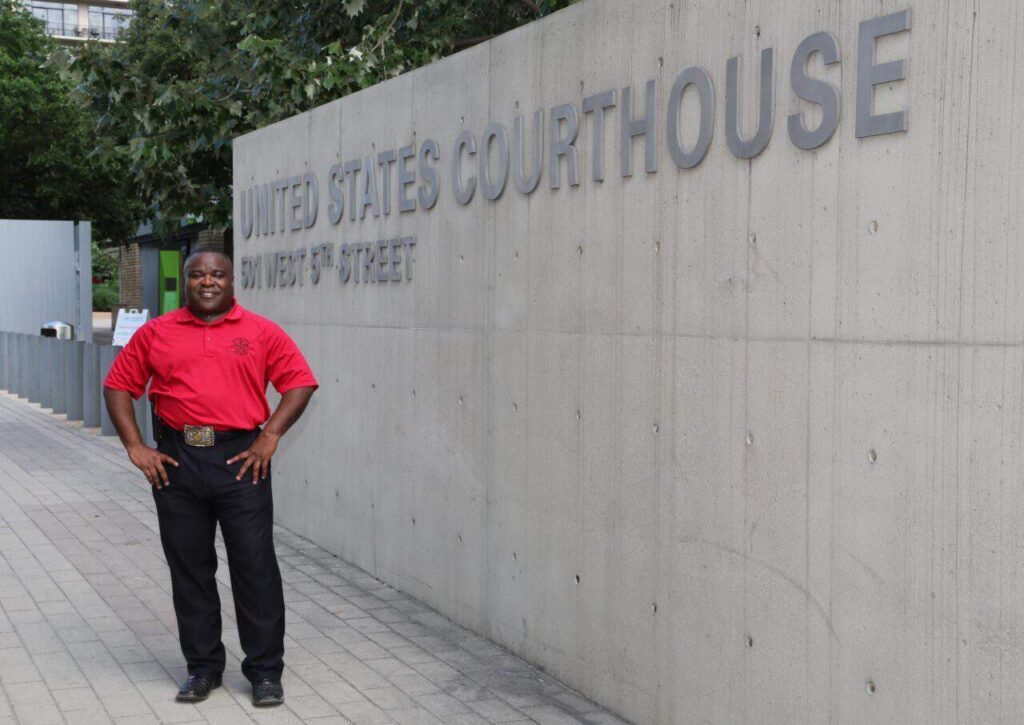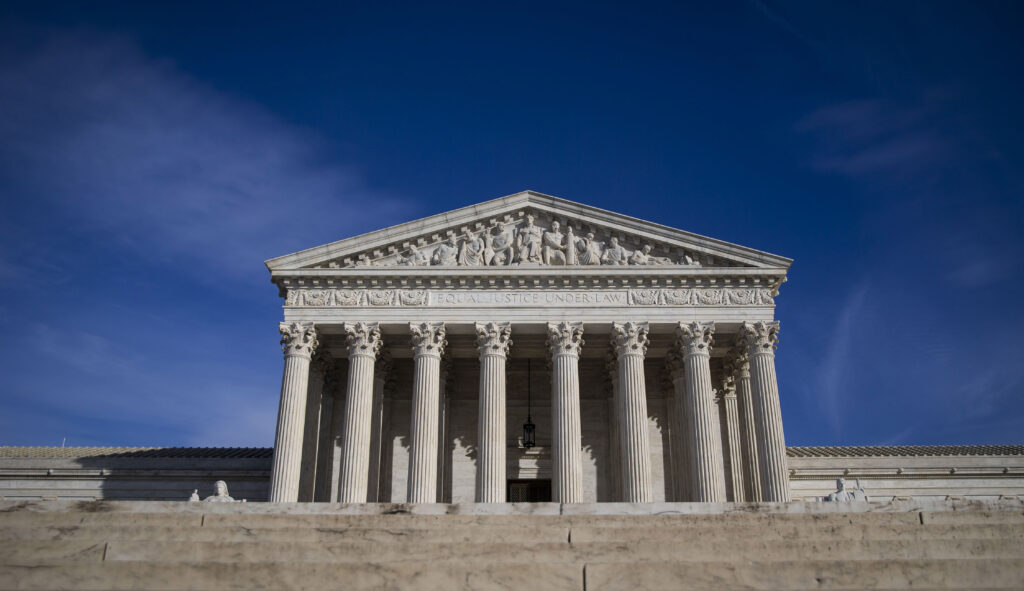The Supreme Court on Wednesday will hear a case surrounding whether the federal government can ban attachments known as bump stocks that allow semi-automatic rifles to shoot quicker — and whether those attachments bring the firearm within the definition of a machine gun.
Michael Cargill, owner of Central Texas Gun Works, handed over his bump stocks after the Bureau of Alcohol, Tobacco, Firearms, and Explosives banned them in 2018. The ban followed the Oct. 1, 2017, massacre on the Las Vegas strip that killed 60 people when 64-year-old Stephen Paddock used such attachments while firing down at civilians from the 32nd floor of a hotel.

How did Cargill get involved in the case?
After he turned in his bump stocks, Cargill immediately challenged the ATF rule in Texas federal court, arguing Congress should first pass a statute with a broader definition of machine guns or banned devices that make a semi-automatic gun fire at rates similar to machine guns.
“The Trump administration came out and said they were going to ban the bump stocks by way of going through the ATF instead of going through Congress, and so that disturbed me,” Cargill told the Washington Examiner, accusing the agency of taking the power away from Congress.
“And I said, ‘If you’re going to change gun legislation such as this, banning parts or pieces of firearms or firearms altogether, we actually need to go to Congress to do that,'” said Cargill, who is the namesake of the high court case Garland v. Cargill.

This won’t be a typical Second Amendment dispute
The core question before the Supreme Court is whether the ATF violated the Administrative Procedure Act, which informs agencies how to create and enforce regulations. While the subject matter involves bump stock gun attachments, legal experts say the case does not implicate Second Amendment rights.
“This is not about the Second Amendment right to own bump stocks or machine guns or anything like that,” said Ilya Shapiro, a senior fellow and director of constitutional studies at the Manhattan Institute. “It’s purely a case of statutory interpretation.”
The U.S. Court of Appeals for the 5th Circuit ruled 13-3 in favor of Cargill, finding that, at a minimum, the “single function of the trigger” and “automatic” are ambiguous terms. Due to the ambiguity, the majority said the “rule of lenity,” which requires a court to apply the law in a manner most favorable to the defendant, applied to Cargill.
The rule classifies bump stock as a “machinegun” as defined in 26 U.S.C. 5845(b) of the National Firearms Act and makes possession of the attachment a felony subject to up to 10 years in prison and a $250,000 fine. More than 500,000 U.S. residents who previously purchased a bump stock have been forced to turn theirs in, and gun advocates like Cargill have said the loss of property value likely exceeds around $100 million.
Is Chevron relevant?
Shapiro, who thinks the Supreme Court is likely to affirm the lower court’s holding, said a victory for Cargill likely would “restore the status quo before the promulgation of the ATF regulation,” so long as Congress does not pass a law banning the attachments. He also said the justices likely wanted to take up the case due to conflicting rulings in the 10th Circuit, which upheld the ATF rule under the high court’s Chevron doctrine and is also a precedent up for consideration this term.
The 1984 precedent established in Chevron v. Natural Resources Defense Council tells federal courts to defer to an agency’s “reasonable” interpretations when statutory language in legislation is ambiguous, but the high court’s oral arguments in a case brought by fishermen challenging the precedent gave hints that the justices could seek to weaken or even upend Chevron.
Shapiro said he believes Chevron may not be referenced in the high court’s eventual opinion, likely to come before July, because “they could say that there’s no statutory ambiguity here,” without a need to “determine whether the ATF was reasonable, should be referred to, or otherwise.”
John Vecchione, senior litigation counsel for the New Civil Liberties Alliance, which represents Cargill, told the Washington Examiner that the ATF “waived the Chevron argument in lower courts and said we’re just going to go straight on statutory construction, just as if there was no Chevron.
“So I don’t think Chevron will hit it, but it is part of the administrative law, you know, Lollapalooza that they have up in the Supreme Court this term,” Vecchione said.
Biden administration hopes to uphold Trump-era rule
After the devastating Las Vegas shooting, then-President Donald Trump urged the ATF to move expeditiously on forming its rule, which the agency published in 2018.
The Biden administration has since carried over the policy and argues it should remain in place, defending the rule in court. In April 2023, the Biden administration appealed the 5th Circuit’s decision, arguing the attachment to semi-automatic rifles meets the definition of machine guns. The Justice Department also asked the Supreme Court to review a similar decision from the 6th Circuit.
The government contends that a bump stock falls within this definition because it “enables a semiautomatic rifle to fire multiple shots ‘by a single function of the trigger.’”
“Rifles equipped with bump stocks, like conventional machine guns, are dangerous and unusual weapons,” Solicitor General Elizabeth Prelogar, who represents the DOJ before the high court, wrote in a filing.
Prelogar will be facing Cargill’s lead attorney Jonathan Mitchell, who more recently argued at the Supreme Court in defense of Trump’s bid to remain on presidential ballots after a 14th Amendment challenge from Colorado jeopardized his access on the state’s primary election ballot.

CLICK HERE TO READ MORE FROM THE WASHINGTON EXAMINER
Cargill is planning to make the trek from Texas to make an appearance at the high court on Wednesday morning to support his case.
“I will definitely be there,” Cargill said, adding he believes the case could “definitely change the way the ATF does business, and other federal agencies as well.”

